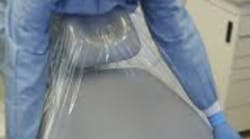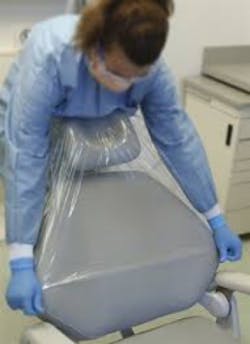Helping the environment: Reduce the 'plastic' footprint in your dental office
By Kay Sitterson, RDH, CDA, MS, and Jan Sitterson, BS
We are a throwaway society, a plastic society. In reflection of this, medical/dental waste has gotten out of hand. What is your office doing to reduce or eliminate plastic pollution? Single-use plastic items are convenient and often necessary for patient care. But it is a common misperception that proper infection control demands wasteful and polluting practices.
Let’s be creative and figure out ways to reduce our plastic consumption in dentistry. This article will examine dental plastic waste and ways we can be better stewards of our environment.
Plastic is a substance our earth cannot digest. Every bit of the plastic manufactured since the early 1900s is still on the earth. Plastic is a durable material made to last forever. Yet illogically, 33 percent of it is used only once and then thrown away.
So what happens to plastic after consumption? Most of it ends up in landfills or burn piles where toxic chemicals are released into the air as the plastic ages. Only a small amount (8%) is melted down and repurposed. We recycle very little of our consumed plastics because each kind of plastic (#1-7) has to be recycled by a different process. Plastic does not biodegrade; it only breaks down into smaller and smaller pieces called microplastics. These tiny pieces in turn, end up in our lakes and oceans where it is consumed by fish, fowl, and wildlife. Plastics eventually end up in our food chain through bioaccumulation and have been linked to health issues such as cancers, endocrine and hormonal disruptions.
OK, let’s evaluate. Go look in your operatory trash can. What is in there? Are there any single-use plastic items that could be replaced with a reusable version? Compostable/biodegradable bags have been developed and might be an option for barriers in your office. There are several alternatives to the regular plastic bag that we use as barriers. Compostable bags are made from corn, potato, and soy starches which can break down in a natural environment in a matter of weeks. Other plastic bags are made with chemical additives that allow the bag to break down into smaller pieces faster with the use of UV light exposure and high temperatures.
We can also purchase autoclavable items instead of single-use disposables items. Our focus can be to reduce the number of single-use items while still maintaining high standards of asepsis and patient care.
Eco-dentistry or “green dentistry” is a high-tech approach that reduces the environmental impact of dental practices. It is the responsible movement of the future. Get your office on board! There are many areas in dentistry that we can substitute items to make a difference.
What can a dental professional do?
- Use metal or autoclavable plastic instead of single-use disposables (example: air/water or suction tips)
- Use aluminum foil as barriers instead of plastic. Recycle after use! Aluminum foil is 100% recyclable. Recycling aluminum saves about 95% of the energy that would be needed to make new aluminum. (www.aluminum.org)
- Use biodegradable bags as barriers instead of plastic. These bags are made from natural materials such as vegetable starches and break down in the environment easier than plastics. (http://biobagusa.com)
- Use fluoride varnish rather than fluoride applied in single-use trays.
- Limit the use of multiple gloving during patient care.
- Use OSHA recommended (reusable) nitrile utility gloves to disinfect your operatory (not exam gloves).
- Autoclave cassettes in reusable cloth or reusable fabric bags rather than plastic backed paper. Reusable cloth methods have been used in hospital operatory rooms for decades. It is a cost-effective, protects practitioners and patients, while keeping millions of pounds of trash out of our overburdened landfills.
- Use reusable/autoclavable stainless steel impression trays rather than single use plastic trays.
- Switch your office over to digital films. This also keeps dangerous chemicals out of our water supply.
- Switch single-use sterilization pouches for metal cassettes wrapped in cloth.
- Purchase items in bulk to reduce packaging material and cost. Tell your dental supplier to reduce its packaging and to combine your orders to reduce shipping waste.
- Consider autoclavable prophy angles.
- Consider bamboo toothbrushes and biodegradable floss picks as gifts to patients.
- Have a plastic recycling container in your office. Know your recycle numbers and put as much in recycling as possible. Make sure your garbage pickup will take it to a recycling center rather than adding it to a landfill.
- Educate your patients. Place a sign in the reception area or check out. Clip an information card on your dental equipment explaining that your business is committed to reduce single-use plastics.
What can you do as a good consumer?
- Don’t accept single-use plastic items. Just say “no thanks” to plastic bags, cups, straws, plates, etc. It has been documented that a person uses a plastic bag on average for only 12 minutes before throwing it away.
- Bring reusable silverware, shopping bags, and paper straws with you!
- Carry a reusable drink bottle such as stainless steel (often restaurants will fill up at a discount).
- Wrap your lunch sandwich in wax paper or package your salad in a glass mason jar for lunch.
- Don’t buy products and groceries over packaged. Purchase fresh fruits and vegetables whole, not wrapped or packaged.
- Ask for takeout food in aluminum foil or wax paper.
- Use paper or reusable coffee filters. Avoid individual disposable coffee “K”cups made from plastic.
- Support the elimination of plastic polyethylene micro-beads in personal care products. The polyethylene specks, no bigger than grains of table salt, can be found in a variety of soaps, exfoliating scrubs and other personal care products including toothpaste.
The purpose of this article is to create an awareness of plastic pollution. Dentistry has a responsibility along with the rest of the world to find alternatives for the plastics that we are consuming at alarming amounts. As time passes, resources and alternative will be more readily available for substitutions if consumers make their values clear.
For now, use your voice and day to day choices to acknowledge our problem with plastic pollution. Your small daily choices can make a difference in our world. The dental office of the future utilizes hospital-tested reusable methods, combined with effective, planet-safe surface disinfectants, generating about 90 percent less trash.
We all have a responsibility to reduce plastic on our planet. Let’s reduce our plastic footprint in dentistry! Recycling waste materials is better than landfilling them, but the best option is to not generate plastic waste at all. Please, let’s start by eliminating and reducing single-use plastics in our lives.
Jan and Kay Sitterson are a mother and daughter team from North Carolina. Jan is a recent environmental science graduate from University of North Carolina-Chapel Hill. She is currently working with the Environmental Protection Agency in Athens, Ga. Kay is a DANB certified dental assistant, registered dental hygienist and dental hygiene educator. They are both passionate about responsible environmental stewardship.
Other resources







